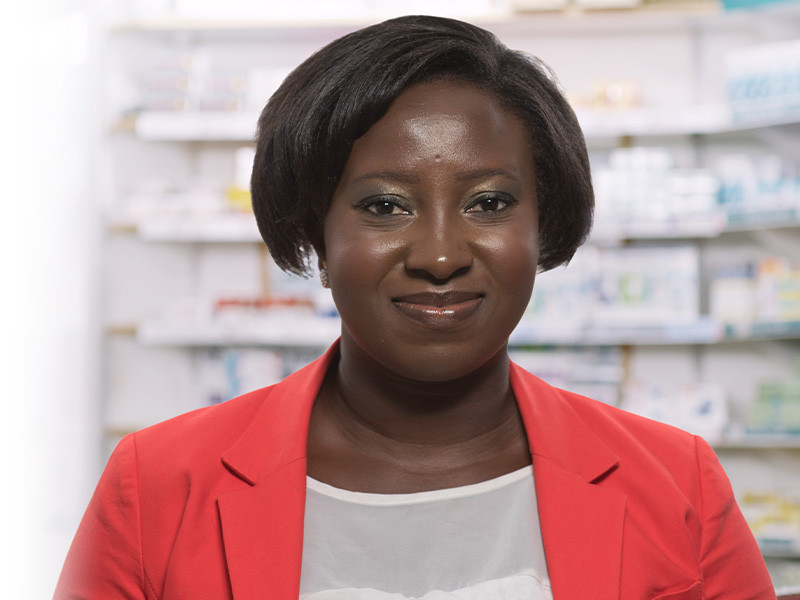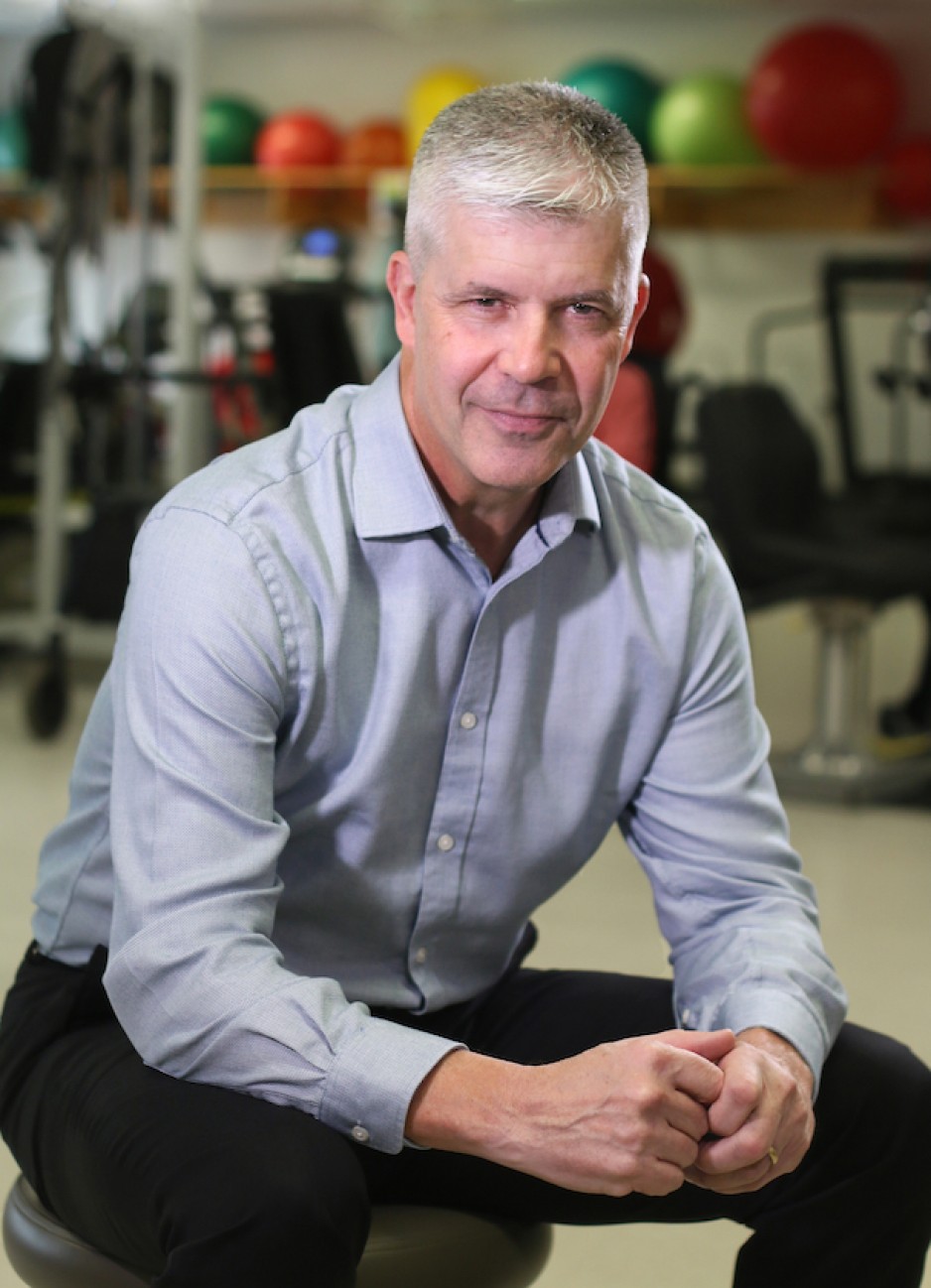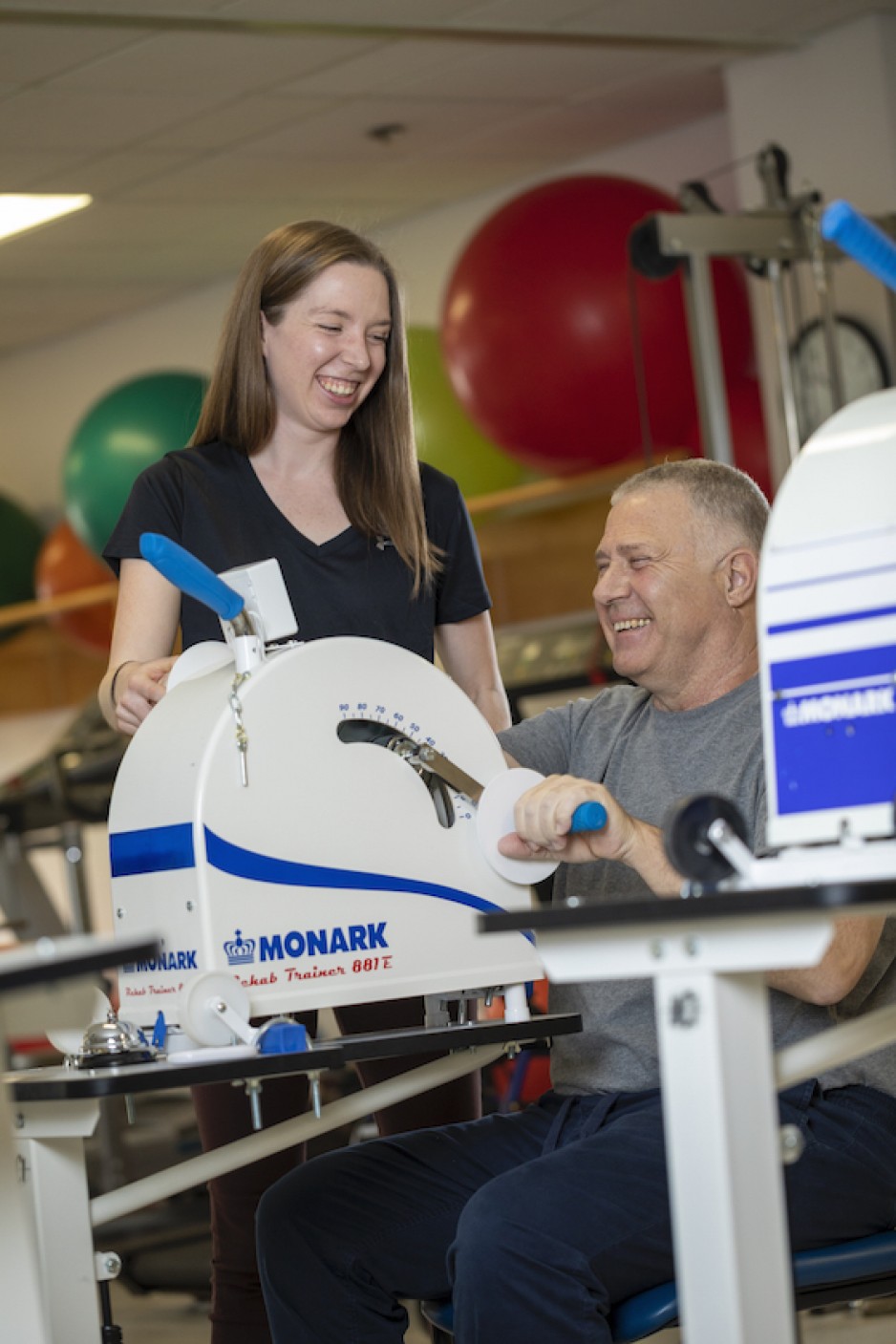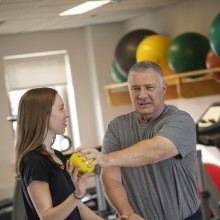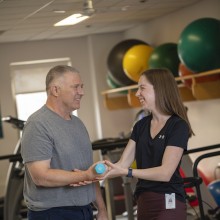Born to Move
For most of us, we took our first steps before we turned a year old. On tiny unsteady feet, we explored the world around us, experiencing the wonder of independence. However, as we age and move into adulthood, our lack of mobility might slow us down.
Dr. Tim Doherty treats people who have mobility loss. A renowned expert in physical medicine and rehabilitation and lead physiatrist at St. Joseph’s Health Care London’s Parkwood Institute, he sees firsthand how movement and activity affect one’s health. We asked Dr. Doherty about mobility.
Q: WHY IS MOBILITY AN IMPORTANT PART OF OUR HEALTH?
A: We were born to move. Mobility is how we get around in the world, allowing us to do all the things we need to do as people.
When we move, we feel better about ourselves physically and mentally. Most of us are mobile through much of our lives, but when our mobility is limited, it can affect us in numerous ways. It may harm our quality of life, lead to social isolation and depression, affect our ability to work and participate in the community, and place a burden on our family and caregivers.
Q: WHEN THINKING ABOUT MOBILITY LOSS, WE MAY PICTURE SOMEONE WITH A BROKEN LEG OR AN OLDER ADULT USING A WALKER. WHAT WAYS DO PEOPLE LOSE MOBILITY?
A: It can come in multiple ways. Sometimes it’s through a sudden incident, such as a tragic accident, concussion, fall, spinal cord injury or stroke. Other times, mobility loss is gradual as people deal with frailty, dementia, mental illness, diabetes, stroke, arthritis, Parkinson’s disease, and muscular sclerosis.
Q: WHAT IS BEING DONE TO HELP PEOPLE IMPROVE MOBILITY AND REGAIN INDEPENDENCE?
A: At St. Joseph’s Parkwood Institute, we are leading in many areas of mobility, including the use of technology to assess and treat individuals. For instance, people with a spinal cord injury can use a robotic system that might help them walk again.
People are receiving better assessments thanks to our researchers who are exploring what factors affect mobility in aging, neurological and musculoskeletal conditions.
The more we can do to get people moving again, the better off they will be in terms of mental and physical health – and in participating in what’s important to them.
Q: WHAT DOES THE FUTURE OF MOBILITY LOOK LIKE?
A: We’ve come a long way in how we treat people who’ve lost mobility. What we’re doing today in rehabilitation and treatment at Parkwood Institute wouldn’t have been possible 20 years ago. Looking ahead, with development of The Gray Centre for Mobility and Activity, we are bringing together a diverse group of medical professionals, researchers and industry experts to develop, test and deliver new treatments, new ways of rehabilitating people. This kind of coordinated approach will help unlock innovative solutions – ideas we may not have considered yet – that get people moving again.
Everything was taken away
Chris MacGregor
Farmer, 52 Parkhill, Ont.
A farmer. A hard worker. An independent man.
This would describe Chris MacGregor, until he experienced a stroke at age 50.
“It took everything on his right side. It took his speech. He could do nothing,” says Connie, his wife of 23 years. “It was the worst day of my life. I didn’t know if he was going to make it. Everything was taken away by the stroke. It was awful to see him lose his mobility.”
To regain movement and build activity into his life, Chris received therapy from the Stroke Rehabilitation Program at St. Joseph’s Health Care London’s Parkwood Institute. His care team developed a personalized treatment plan, which included therapies tailored specifically to Chris. For example, movements needed to change a tractor tire – something familiar to a farmer like Chris – were part of his rehabilitation program.
With grit and determination, Chris has made great strides since his stroke in 2018, literally and figuratively.
He walks to the end of the laneway three times a day by himself, says Connie. And while his speech is slow, it’s coming.
Seeing mobility stripped from her husband and then witnessing it gradually return, she remains hopeful and optimistic.
“Yes, life is going to be different but we are going to work hard and we’re going to get it to the best it can be.”
“Without your mobility you don’t have a lot. Mobility is everything.”
— Connie MacGregor
My legs don't work like they used to
Lee Thibeault
Para Athlete, 31, London, Ont.
On June 25 2013, Lee Thibeault took his motorcycle for a ride. He didn’t make it home.
He was struck by a hit-and-run driver. “The accident left me in a wheelchair,” he says. “It was actually pretty scary. I’ve become a prisoner to my own body.”
Part of Lee’s rehabilitation at St. Joseph’s Parkwood Institute involved therapy on robotic equipment that imitates the movement of walking.
“Just to see that there’s a light at the end of the tunnel, life got a little easier every day,” says Lee, a former professional boxer who was studying aircraft mechanics before the crash.
Even though his mobility is not what it used to be, Lee remains positive, and perhaps philosophical, as he works to take back his independence.
“We take it for granted when we’re on our feet. We were meant to be standing, walking, and moving. Mobility is the most important thing... My legs don’t work like they used to. But just because I have changed doesn’t mean my life needs to change. And I feel that’s what Parkwood Institute has done for me.”
Is my whole life going to change?
June Hamel
Retired Court Reporter, 87, London, Ont.
June Hamel and her dog, Casey, had a difference of opinion while heading out on a walk.
“He ran one way and I landed on the floor with a broken hip,” says June.
The next day, June underwent hip surgery and, following a hospital stay, came to St. Joseph’s Parkwood Institute.
“When I was lying in a bed knowing I’d broken my hip, I started to think, “Oh no, now what? Is my whole life going to change?”
At Parkwood Institute, June’s rehabilitation team got her exercising so she could get back on her feet.
“They were there to help me. They were encouraging me and they gave me spirit,” says June. “Being mobile keeps my mind going, keeps my body going. I figure if I got moving, I would stay moving. I just want to be here, and I have to move to be here.”
MOVING MOBILITY FORWARD
As the country’s population ages and rates of chronic diseases rise, more Canadians will experience mobility challenges, and will see their work and family life disrupted. At the same time, pressure on the health care system will surge.
St. Joseph’s Health Care London is taking aim at these looming challenges with the creation of The Gray Centre for Mobility and Activity.
Located at Parkwood Institute, the centre will expand and advance the medical, research and community work already happening to improve mobility in patients. It will also make Parkwood Institute a national hub for rehabilitative care and treatment where scientists, clinicians and community partners will collaborate on new solutions to treat and care for people with loss of mobility and activity.
The centre’s work is being made possible through a $7.5 million gift to St. Joseph’s Health Care Foundation by Bill and Lynne Gray.
Facts on Mobility
- $2 Billion is the annual cost to the Canadian health care system for slips and falls.
- 1 in 5 seniors have difficulty rising from a chair or walking two blocks
- 1 in 4 will be 65 years or older by 2030
- Every 30 minutes someone in Canada has a stroke
- 30,000 Canadians fracture a hip annually
-
Care Matters Here.
We focus on the best care possible so people can live life to the fullest.
